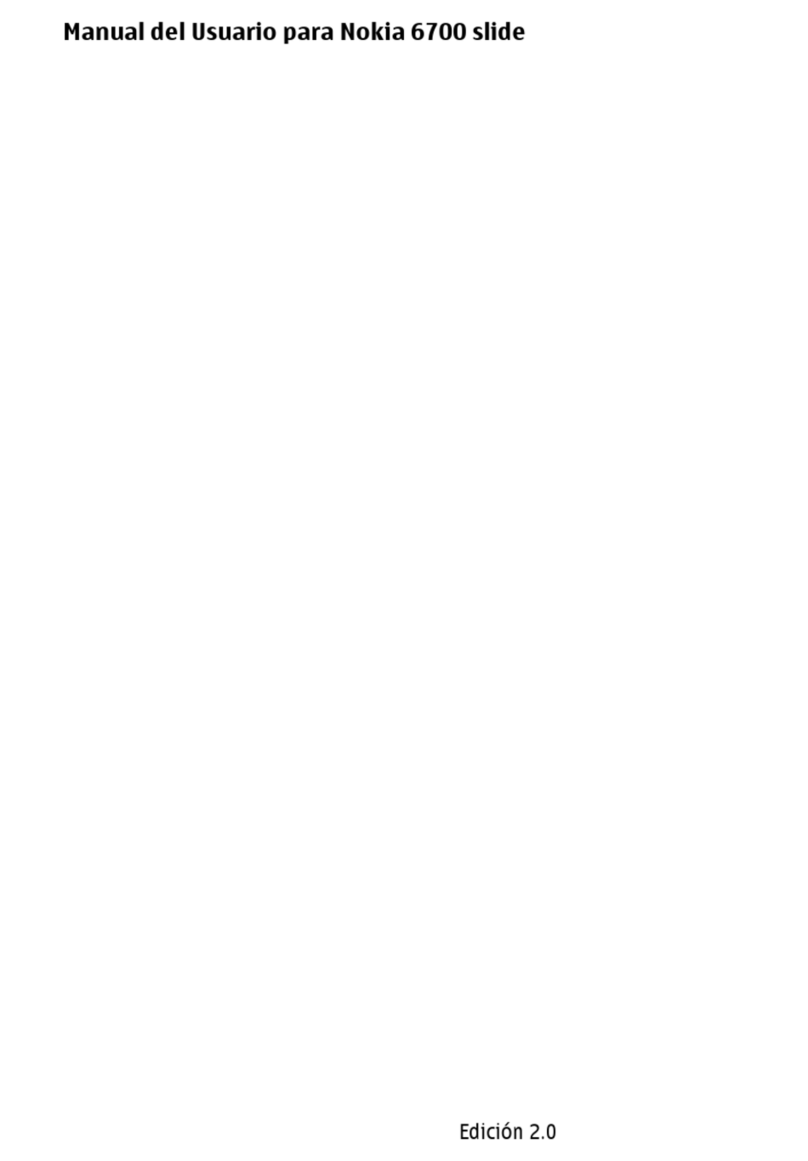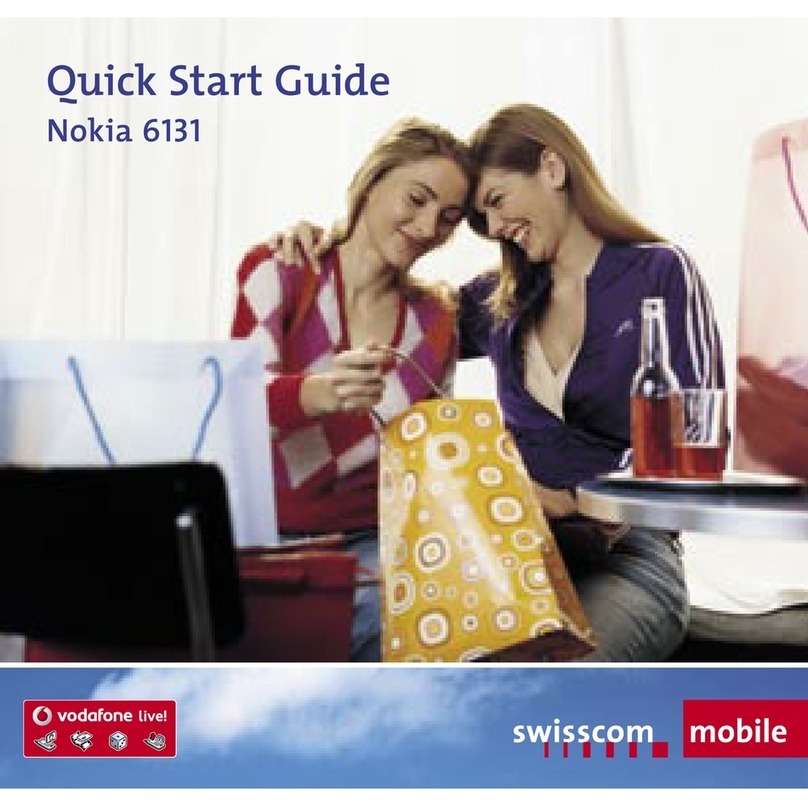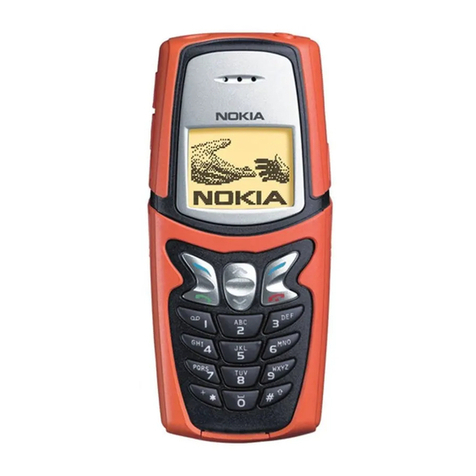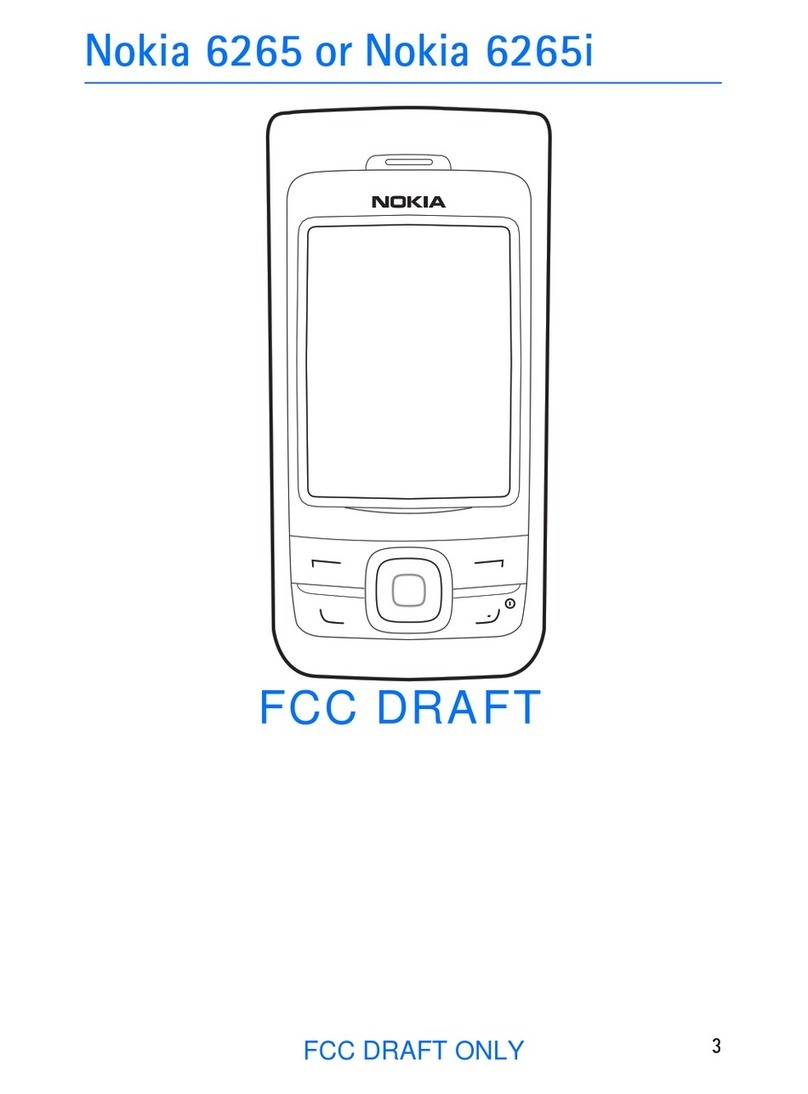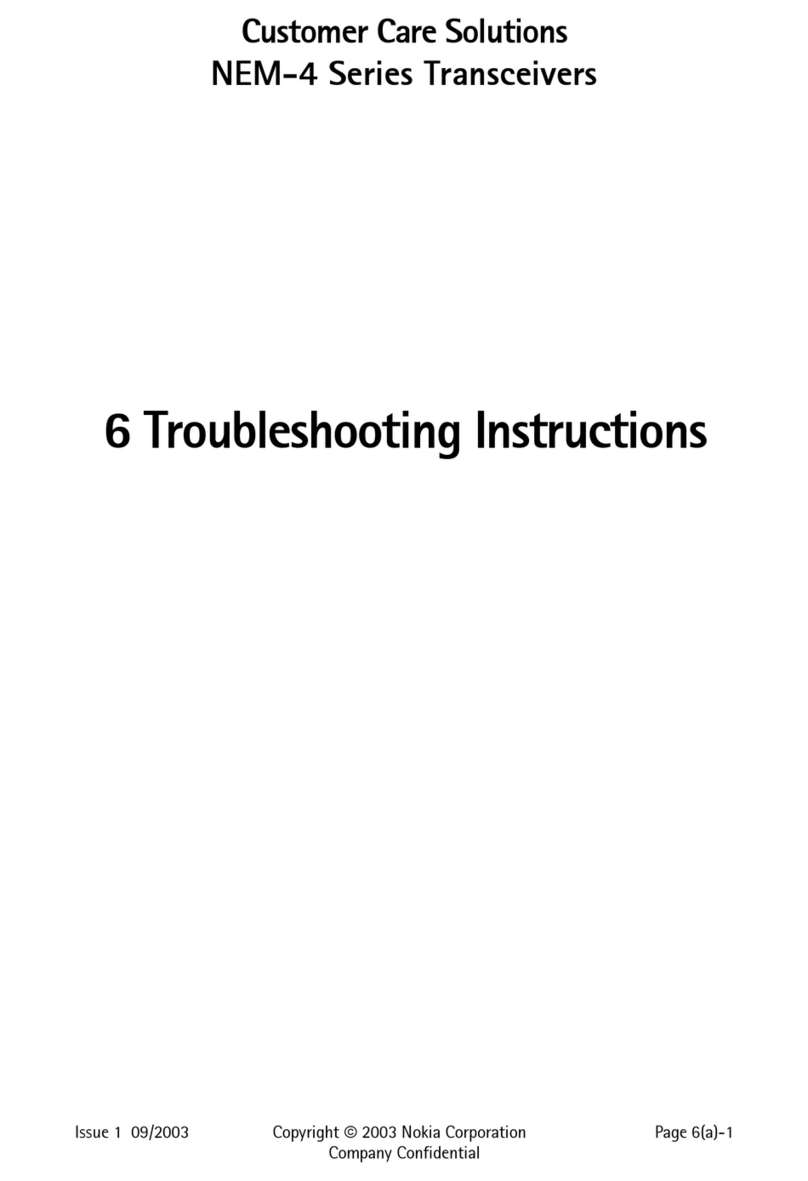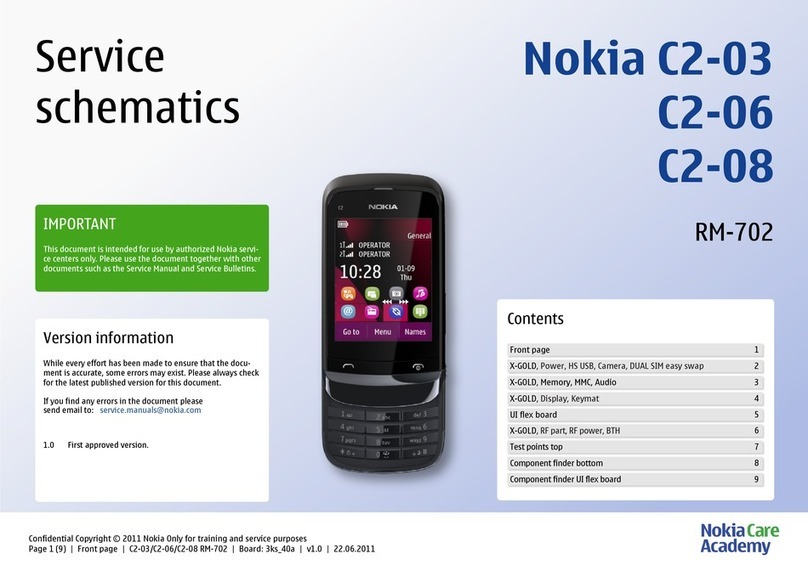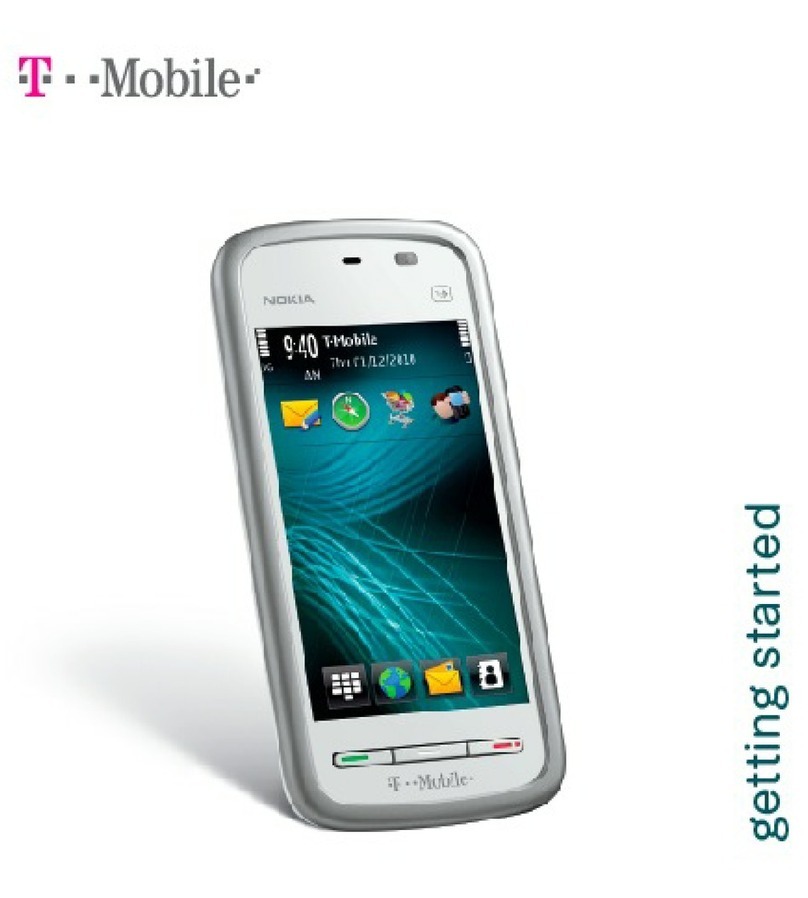
1508i(RM-430)
Baseband Description and Troubleshooting
Nokia Customer
Care
Issue 1
Copyright © 2008 Nokia, All rights reserved
The interface of the CBP5.6 is described in the following
diagram. Receive and transmit interfaces for CBP 5.6
provide analog I and Q signals and support super-
heterodyne radio and direct conversion radio design. The
CP external-memory interface supports 3.0V or 1.8V, the
address bus supports 16-bit address which can support
three to six external devices via chip selects. CBP 5.6
includes 48 GPIOs and interrupts, some of which are
multiplexed with other functions. All GPIO pins are in input
state by default and use a large pull-up or pull-down resistor
value to minimize the current drain. The USB port supports
data rates of up to 12Mbps, the USB analog drivers and
48.00MHz PLL are integrated into CBP 5.6, the control
processor manages the USB function. Two independent
serial-peripheral interfaces are provided on CBP 5.6: one is
for RF control and the other is for general-purpose use. The
R-UIM interface supports 3V UIM cards and consists of five
pins, these pins are multiplexed with another function. The
CP manages the R-UIM function.
Five independent PDM DACs are supplied on the CBP 5.6
chip.
Three of the outputs are dedicated to radio-control signals
for Rx automatic gain control (AGC), Tx AGC, and automatic
frequency control (AFC). The fourth and fifth PDM outputs
are spares. The PDMs are 12-bit DACs and have a
guaranteed output range of 0.2 V to 2.5 V.
The 12-bit auxiliary ADC supports eight independent
external channels on pins AUXADC [7:0]. There are also
eight internal channels used to measure internal analog
voltages. The input voltage range is 0.2 V to 2.7 V. The
conversion time is 156 µsec. The typical uses of the external
